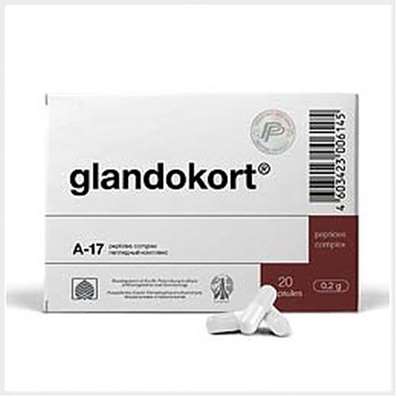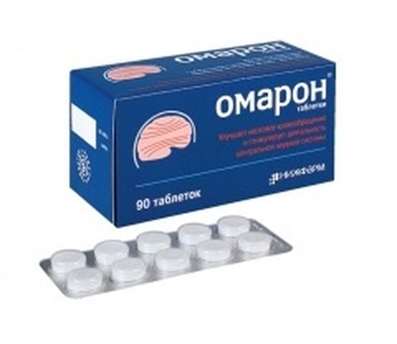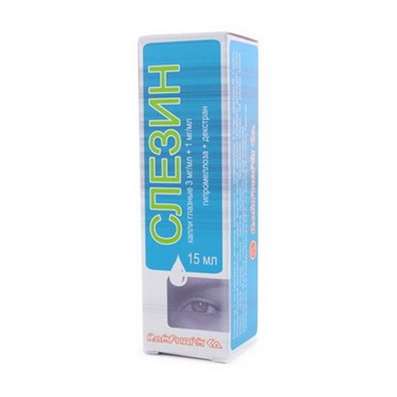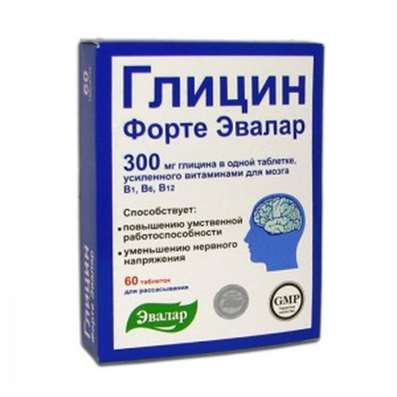Instruction for use: Betaferon
I want this, give me price
Dosage form: Lyophilizate for the preparation of a solution for subcutaneous administration; Lyophilizate for the preparation of a suspension for subcutaneous administration
Active substance: Interferonum beta-1b
ATX
L03AB08 Interferon beta-1b
Pharmacological group:
Cytokine. Means for treating multiple sclerosis [Interferons]
The nosological classification (ICD-10)
G35 Multiple Sclerosis: Disseminated Sclerosis; Multiple sclerosis; Recurrent multiple sclerosis; Secondary-progressive multiple sclerosis; Exacerbation of multiple sclerosis; Mixed forms of multiple sclerosis
Composition
Lyophilizate for solution for injection 1 fl.
active substance: Interferon beta-1b 0.3 mg
(Corresponding to 9.6 million IU)
Auxiliary substances: human albumin; Mannitol
In 1 ml of the prepared solution contains 0.25 mg (8 million IU) of recombinant interferon beta-1b
In 1 ml of an aqueous solvent for solution for injection contains 5.4 mg of sodium chloride
Description of dosage form
Lyophilizate: lyophilized white mass.
Solvent: Clear, particle-free solution.
Reconstituted solution: a solution from slightly opalescent to opalescent, colorless or light yellow in color.
Pharmachologic effect
Mode of action - immunomodulating.
Pharmacodynamics
The active substance of the preparation Betaferon® (interferon beta-1b) has antiviral and immunoregulatory activity. The mechanisms of action of interferon beta-1b with multiple sclerosis are not completely established. However, it is known that the biological effect of interferon beta-1b is mediated by its interaction with specific receptors that are found on the surface of human cells. The binding of interferon beta-1b to these receptors induces the expression of a number of substances that are considered as mediators of the biological effects of interferon beta-1b. The content of some of these substances was determined in the serum and blood cell fractions of patients receiving interferon beta-1b. Interferon beta-1b reduces the binding ability and expression of receptors for gamma-interferon, enhances their decay. In addition, interferon beta-1b increases the suppressor activity of peripheral blood mononuclear cells.
Pharmacokinetics
After sc administration at the recommended dose of 0.25 mg, the concentration of interferon beta-1b in the blood is low or not at all determined.
After SC administration of 0.5 mg Betaferon® to healthy volunteers, Cmax in plasma is about 40 IU / ml 1-8 hours after the injection. In this study, the absolute bioavailability of Betaferon® with p / to administration is approximately 50%. With the / in use of clearance and T 1/2 of the drug from the serum - an average of 30 ml / min / kg and 5 hours, respectively.
The introduction of Betaferon® in a day does not lead to an increase in the level of the drug in the blood plasma, its pharmacokinetic parameters during the course of therapy also do not change.
With the use of Betaferon® at a dose of 0.25 mg every other day in healthy volunteers, the levels of biological response markers (neopterin, beta2-microglobulin and immunosuppressive IL-10 cytokine) were significantly increased in comparison with baseline values 6-12 hours after administration of the first Dose of the drug. Cmax was achieved in 40-124 hours and remained elevated during the 7-day (168 h) study period.
Clinical Pharmacology
Both with remittent and secondary-progressive multiple sclerosis, Betaferon® treatment reduces the incidence (by 30%) and severity of clinical exacerbations of the disease, the number of hospitalizations and the need for steroid treatment, and also prolongs the duration of remission.
In patients with secondary-progressive multiple sclerosis, treatment with Betaferon® can delay further progression of the disease and the onset of disability, incl. Severe (ie when patients are forced to constantly use a wheelchair) for up to 12 months. This effect is observed in patients with both exacerbations of the disease and without exacerbations, as well as with any index of disability (in the study, patients rated from 3.0 to 6.5 points on the EDSS extended disability scale) participated.
The results of MRI of the brain of patients with remitting and secondarily progressive multiple sclerosis on the background of treatment with Betaferon® confirm the significant positive effect of the drug on the severity of the pathological process, as well as a significant reduction in the formation of new active foci.
Indication of the Betaferon
Clinically Isolated Syndrome (CIC) (the only clinical episode of demyelination that allows presuming multiple sclerosis, with the exclusion of alternative diagnoses) with a sufficient degree of inflammation for intravenous corticosteroids - to slow the transition to clinically significant multiple sclerosis (CVD) in patients at high risk Development. There is no generally accepted definition of a high risk. According to the study, patients with a single-focus ICU (clinical manifestations of 1 focal point in the CNS) and ≥9 T2-foci on MRI and / or a cluster accumulating foci are among the high-risk group of CVD. Patients with multifocal CIC (clinical manifestations> 1 foci in the central nervous system) belong to the group of high risk of developing CVD, regardless of the number of foci on MRI;
Remitting multiple sclerosis (RRS) - to reduce the frequency and severity of exacerbations in outpatients (ie patients who can walk unaided) with at least 2 exacerbations in the past 2 years and a complete or incomplete recovery of the neurological deficit;
Secondary progressive multiple sclerosis with an active course of the disease characterized by exacerbations or marked worsening of neurological functions in the last two years - to reduce the frequency and severity of clinical exacerbations of the disease, and to slow the progression of the disease.
Contraindications
Hypersensitivity to natural or recombinant beta interferon or human albumin in history;
pregnancy;
lactation.
CAREFULLY
With the following diseases:
Heart disease, particularly heart failure III-IV stage (according to the NYHA classification), cardiomyopathy;
Depression and / or suicidal thoughts (including in the anamnesis), epileptic seizures in the anamnesis;
Monoclonal gammopathy;
Anemia, thrombocytopenia, leukopenia;
Impaired liver function;
Age to 18 years (due to lack of sufficient experience of use).
Application in pregnancy and breastfeeding
Contraindicated in pregnancy. However, it is not known whether Betaferon® can cause fetal damage in the treatment of pregnant women or affect the reproductive function of a person. In controlled clinical trials, patients with multiple sclerosis had spontaneous abortion. In studies in rhesus monkeys, human interferon beta-1b exerted an embryotoxic effect and in higher doses caused an increase in the frequency of abortions. Women of reproductive age during treatment with this drug should use adequate methods of contraception. In case of pregnancy during treatment with Betaferon® or planning pregnancy, discontinuation of treatment should be recommended.
It is not known whether interferon beta-1b is excreted in breast milk. Given the potential for the development of serious adverse reactions in infants who are breastfeeding, you should stop breastfeeding or stop the drug.
Side effects
The following are undesirable events observed with a frequency of 2% and higher than in the placebo group (inactive drug) in patients who received Betaferon® at a dose of 0.25 mg or 0.16 mg / m2 every other day for up to three years.
General reactions: reaction at the injection site, asthenia (weakness), a complex of influenza-like symptoms, headache, fever, chills, abdominal pain, chest pain, pain of different localization, general malaise, necrosis at the injection site.
Cardiovascular system: peripheral edema, vasodilation, peripheral vascular disease, hypertension, palpitations, tachycardia.
Digestive system: nausea, constipation, diarrhea, dyspeptic phenomena.
Blood and lymphatic system: lymphocytopenia (<1500 / mm3), neutropenia (<1500 / mm3), leukopenia (<3000 / mm3); Lymphadenopathy.
Metabolic and alimentary disorders: increase in the level of enzymes in the blood: ACT and ALT - 5 times from the initial. Weight gain.
Musculoskeletal system: myasthenia gravis, arthralgia, myalgia, leg cramps.
Nervous system: hypertonia, dizziness, insomnia, impaired coordination, anxiety, nervousness.
Respiratory system: shortness of breath.
Skin: rash, skin diseases, increased sweating, alopecia.
Genitourinary system: mandatory urination to urinate, frequent urination, in women - metrorrhagia (acyclic bleeding), menorrhagia (prolonged menstrual bleeding), dysmenorrhea (painful menstruation), in men - impotence, prostate disease.
The following list of side effects is based on the observation of the use of Betaferon® after market entry.
The incidence of side effects is classified as follows: very often ≥ 10%, often <10-≥1%, sometimes <1- 1%, rarely - <0.1-≥0.01% and very rarely - <0.01%.
Common reactions: very often - influenza-like symptoms (fever, chills, myalgia, headache or sweating) *. The frequency of these symptoms decreases with time. Rarely - general malaise, chest pain, weight loss.
Local reactions: very often - reactions at the injection site (hyperemia, local edema) *, inflammation *, pain *. Sometimes - necrosis of the skin *.
Over time, with continued treatment, the frequency of reactions at the site of administration of the drug is usually reduced.
Blood and lymphatic system: sometimes - anemia, thrombocytopenia, leukopenia. Rarely, lymphadenopathy.
Endocrine disorders: rarely - thyroid dysfunction, hyperthyroidism, hypothyroidism.
Metabolic disorders: rarely - increased triglyceride levels.
Nervous system: sometimes - muscle hypertonia, depression. Rarely - convulsions, confusion, excitement, emotional lability, suicidal attempts, anorexia.
Cardiovascular system: sometimes - arterial hypertension. Rarely - cardiomyopathy, tachycardia, palpitations.
Respiratory organs: rarely - shortness of breath, bronchospasm.
Gastrointestinal tract: sometimes - nausea and vomiting. Rarely - pancreatitis.
Liver and biliary tract: sometimes - increased activity of ACT, ALT. Rarely - increased activity of gamma-glutamyl transpeptidase, bilirubin level, hepatitis.
Skin and subcutaneous tissue: sometimes - alopecia, hives, itching of the skin, skin rashes. Rarely - a discoloration of the skin, increased sweating.
Skeletal musculature: sometimes - myalgia.
Female reproductive system: rarely - menstrual cycle disorders.
Allergic reactions: rarely anaphylactic reactions.
* - frequency of side effects is indicated on the basis of clinical trial data
Interaction
Special studies of the interaction of Betaferon ® with other drugs have not been conducted.
The effect of Betaferon® at a dose of 0.25 mg (8 million IU) every other day on the metabolism of drugs in patients with multiple sclerosis is unknown.
Against the background of the use of Betaferon®, corticosteroids and ACTH, prescribed for up to 28 days in the treatment of exacerbations, are well tolerated. The use of Betaferon ® simultaneously with other immunomodulators, in addition to corticosteroids or ACTH, has not been studied.
Interferons reduce the activity of hepatic cytochrome P450-dependent enzymes in humans and animals. Care should be taken when prescribing in combination with drugs that have a narrow therapeutic index, the clearance of which is highly dependent on the hepatic cytochrome P450 system (eg antiepileptic drugs, antidepressants). Care should be taken when using any drugs that affect the hematopoiesis system at the same time.
Dosing and Administration
Dosing and Administration
SC, every other day.
Treatment with Betaferon® should be started under the supervision of a physician with experience in the management of multiple sclerosis.
At present, the question of the duration of Betaferon® therapy remains unresolved. In clinical trials, the duration of treatment in patients with remitting and secondarily progressive multiple sclerosis reached 5 and 3 years, respectively. The duration of the course is determined by the doctor.
Preparation of injection solution
A. Packaging of the preparation containing vials and pre-filled syringes: Use the supplied prepared syringe with solvent and needle to dissolve the lyophilized-free interferon beta-lb powder for injection.
B. Packaging of the preparation containing vials, pre-filled syringes, needle bottle adapter and alcohol wipes: Use the supplied ready-to-use syringe with solvent and the needle bottle adapter to dissolve the lyophilized interferon beta-lb powder for injection.
In a vial of Betaferon®, 1.2 ml of a solvent (sodium chloride solution 0.54%) are introduced. The powder must be dissolved completely without shaking. Before use, the finished solution should be inspected, in the presence of particles or a change in the color of the solution, it should not be used.
In 1 ml of the prepared solution, the recommended dose of Betaferon ® is 0.25 mg (8 million ME).
If the prescribed time is not done, then it is necessary to administer the drug as soon as possible. The next injection is performed at 48 h.
Overdose
With the introduction of Betaferon® IV at a dose of 5.5 mg (176 million IU) three times a week, adult patients with cancer had no serious adverse events.
Special instructions
Betaferon® contains human albumin, so there is very little risk of transmission of viral diseases. The theoretical risk of transmission of Creutzfeldt-Jakob disease is also considered highly unlikely.
Changes in laboratory indicators. In addition to standard laboratory tests for the management of patients with multiple sclerosis, before starting therapy with Betaferon®, and also regularly during the treatment, it is recommended to conduct a detailed blood test, including the determination of the leukocyte formula, platelet count and biochemical blood test, and also check the liver function For example ACT, ALT and GGTP activity). When managing patients with anemia, thrombocytopenia, leukopenia (single or combined), a more detailed monitoring of the developed blood test may be required, including the determination of the number of red blood cells, leukocytes, platelets and the leukocyte formula.
Gastrointestinal disturbances. In rare cases, with the use of Betaferon ®, there was a development of pancreatitis, in most cases associated with the presence of hypertriglyceridemia.
Dysfunction of the liver and biliary tract. Clinical studies have shown that Betaferon® therapy can often lead to an asymptomatic increase in hepatic transaminases, which in most cases is only slightly expressed and transient.
As with other beta-interferon treatment, severe liver damage (including liver failure) with Betaferon® is rarely observed. The most severe cases were observed in patients exposed to hepatotoxic drugs or substances, as well as in certain concomitant diseases (eg malignant diseases with metastasis, severe infections and sepsis, alcohol abuse).
In the treatment with Betaferon®, liver function monitoring (including clinical evaluation) should be monitored. Increasing the level of transaminases in the blood serum requires careful observation and examination. With a significant increase in transaminases in the blood serum or the appearance of signs of liver damage (eg jaundice), the drug should be discontinued. In the absence of clinical signs of liver damage or after the normalization of the level of liver enzymes, it is possible to resume therapy with Betaferon® with monitoring of liver function.
Endocrine disorders. Patients with thyroid dysfunction are recommended to check the function of the thyroid gland (thyroid hormones, TSH) regularly, and in other cases - according to clinical indications.
Diseases of the cardiovascular system. Betaferon® should be used with caution in patients with heart disease, particularly in heart failure of stage III-IV according to the NYHA classification, because such patients were not included in the clinical studies.
If against the background of treatment with Betaferon ® cardiomyopathy develops and it is assumed that this is due to the use of the drug, then treatment with Betaferon ® should be discontinued.
Diseases of the nervous system. Patients should be informed that the side effect of Betaferon® may be depression and suicidal thoughts, which should immediately be consulted by a doctor.
In two controlled clinical trials involving 1657 patients with secondary-progressive multiple sclerosis, there was no significant difference in the incidence of depression and suicidal ideation with either Betaferon® or placebo. Nevertheless, caution should be exercised in prescribing Betaferon® to patients with depressive disorders and suicidal thoughts in the anamnesis. If such phenomena occur on the background of treatment, the expediency of Betaferon® cancellation should be considered.
Betaferon ® should be used with caution in patients with epileptic seizures in history.
General disorders and the condition of the injection site. There may be serious allergic reactions (rare, but manifested in acute and severe form, such as bronchospasm, anaphylaxis and urticaria).
If signs of damage to the integrity of the skin appear (for example, the flow of fluid from the injection site), the patient should consult a doctor before continuing with the injections of Betaferon®.
In patients who received Betaferon ®, there were cases of necrosis at the injection site (see "Side Effects"). Necrosis can be extensive and spread to the muscular fascia, as well as adipose tissue and, as a result, lead to the formation of scars. In some cases, removal of necrotic areas or, rarely, skin transplantation is required. The healing process can take up to 6 months.
When multiple foci of necrosis occur, the treatment with Betaferon® should be stopped until the injured areas are fully healed. In the presence of a single focus, if necrosis is not too extensive, the use of Betaferon® can be continued, as in some patients the healing of the necrotic area at the injection site occurred against the background of the use of Betaferon®.
In order to reduce the risk of developing a reaction and necrosis at the injection site, patients should be recommended:
- to carry out injections, strictly observing the rules of asepsis;
- Change injection site each time;
- Administer the drug strictly subcutaneously.
Periodically, one should monitor the correctness of performing independent injections, especially when local reactions occur.
Neutralizing antibodies. As with any other preparation with protein content, the use of Betaferon ® makes it possible to form antibodies. In a number of controlled clinical trials, serum analysis was performed every 3 months to detect the development of antibodies to Betaferon®. In these studies, it was shown that neutralizing antibodies to interferon beta-lb developed in 23-41% of patients, which was confirmed by at least two subsequent positive results of laboratory tests. In 43-55% of these patients, in subsequent laboratory studies, a stable absence of antibodies to interferon beta-1b was detected.
It has not been proven that the presence of neutralizing antibodies has any significant effect on clinical outcomes, including MRI data. With the development of neutralizing activity, the appearance of any side reactions was not associated.
The decision to continue or discontinue therapy should be based on the indicators of the clinical activity of the disease, and not on the status of neutralizing activity.
Immune disorders. The use of cytokines in patients with monoclonal gammapathy was sometimes accompanied by a systemic increase in capillary permeability with the development of shock and death.
Use in children. A systematic study of the efficacy and safety of Betaferon ® in children and adolescents under the age of 18 years has not been carried out.
Impact on the ability to drive and work with machinery Special studies have not been conducted. Undesirable effects from the CNS can affect the ability to drive and work with machinery. Therefore, care must be taken when dealing with potentially hazardous activities requiring increased attention.
Release Form
Powder lyophilized for the preparation of solution for injection. In vials, complete with a solvent in syringes or bottles with alcohol wipes or without them; In a box of 5 or 15 sets.
Conditions of supply of pharmacies
On prescription.
Storage conditions of the drug Betaferon
At a temperature not exceeding 25 ° C.
Keep out of the reach of children.
Shelf life of the drug Betaferon
Lyophilized powder - 2 years. Solvent - 3 years.
Do not use after the expiry date printed on the package.

 Cart
Cart





